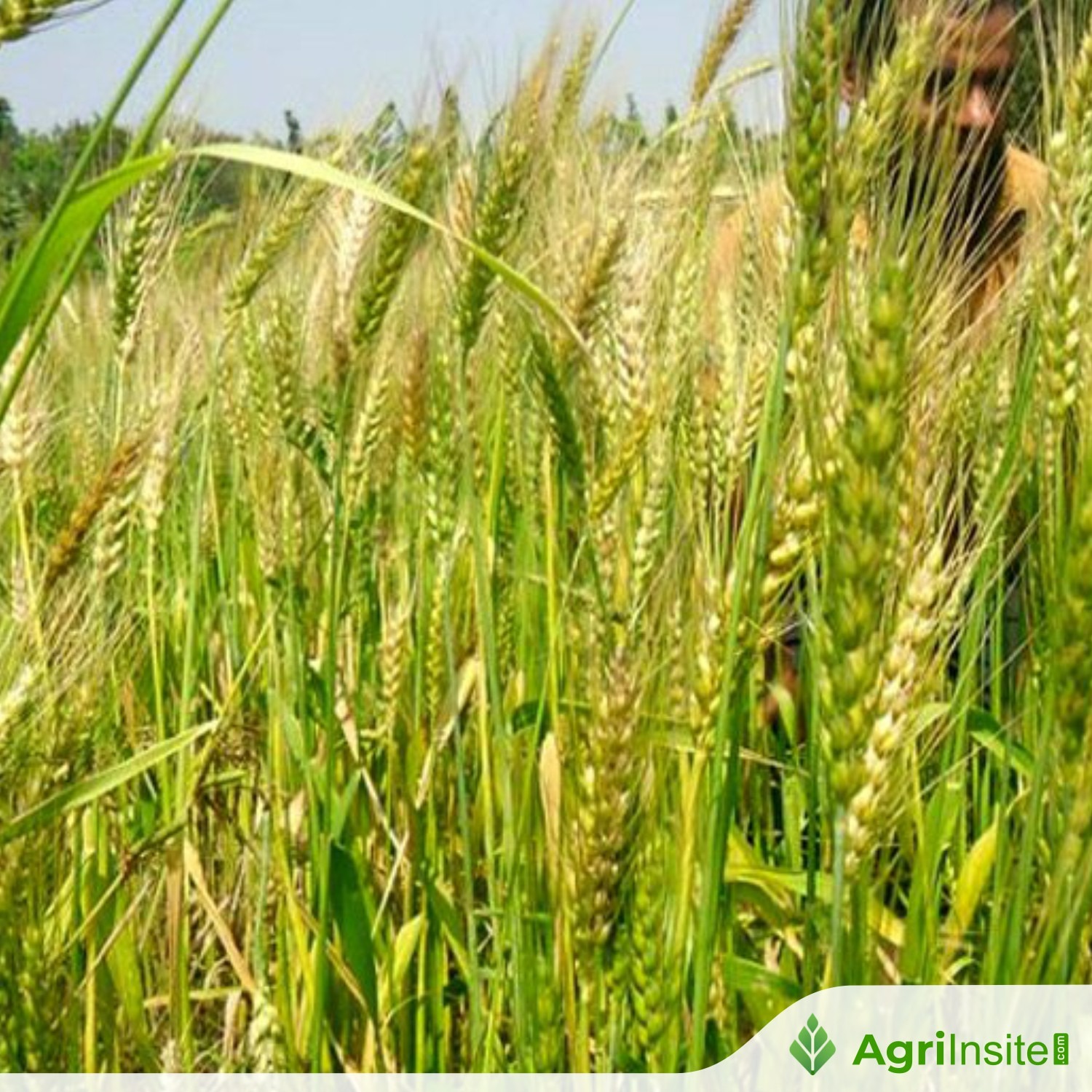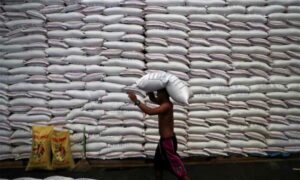Pakistan : Harnessing rice crop residues for agricultural and environmental prosperity

Rice is crucial for food security and the economy in Pakistan and India. However, burning crop residues causes severe air pollution. Promoting modern equipment like balers, shredders, and mulchers for sustainable residue management can improve soil health, reduce pollution, and boost productivity. Government support for farmers to adopt these practices is essential for long-term environmental and economic benefits.
Rice is vital for Pakistan and India due to its role as a staple food, contributing to food security for millions. Additionally, it serves as a significant economic driver, generating revenue through exports and providing livelihoods for a large agricultural workforce in both countries.
Rice stands as a crucial crop in the agricultural landscape of Pakistan and Indian Punjab, offering substantial economic contributions and sustenance to the populace. In Pakistan, rice cultivation covers over 2.8 million hectares of land, with the country being one of the world’s largest rice exporters, shipping out around 4 million tons annually. Similarly, in Indian Punjab, rice production is a significant economic driver, with the state contributing a substantial portion to India’s overall rice output.
Smog is indeed a major challenge for Pakistan and India, with rice crop residue burning by farmers being one of the significant contributors to this issue, especially during the months of October and November when weather conditions can exacerbate the problem. This practice of burning crop residue adds to the already existing air pollution problems in these regions, leading to severe health and environmental consequences.
The widespread haze that occurs seasonally in regions like Punjab in Pakistan and India and Haryana typically begins in late October or early November, when crop fires release smoke that mixes with other pollutants. These include emissions from cooking and heating fires, urban aerosols from traffic and industry, as well as various other sources, both natural and human-caused.
The haze becomes more pronounced when aerosol pollutants are trapped close to the ground due to a temperature inversion, where colder air above prevents the dispersion of pollutants, exacerbating the air quality issues in the affected areas.
Field fires caused by practices like crop residue burning not only contribute to air pollution but also have detrimental effects on the environment and agricultural ecosystem. These fires can kill many beneficial organisms and friendly insects that play crucial roles in maintaining soil health and biodiversity.
Disturbing the soil ecosystem through burning can lead to a loss of soil fertility, disrupt nutrient cycling, and negatively impact the overall balance of the ecosystem. Additionally, the destruction of beneficial microbes and insects can have long-term consequences on crop productivity and the sustainability of agricultural practices.
Modern agricultural equipment such as balers, shredders, and mulchers play a significant role in incorporating crop residues back into the soil, which can have numerous benefits for soil health and fertility. These tools contribute to increasing soil fertility, organic matter, and soil organic carbon:
Incorporation of Crop Residues: Balers, shredders, and mulchers are designed to break down crop residues into smaller pieces or mulch, making it easier to spread them evenly across the field. By incorporating these residues into the soil, they can decompose more rapidly, releasing nutrients that enrich the soil.
Enhanced Nutrient Cycling: Mixing crop residues into the soil promotes nutrient cycling. As the residues decompose, essential nutrients such as nitrogen, phosphorus, and potassium are slowly released, providing a natural fertilizer for crops and improving soil fertility over time.
However, here is a general estimation of the potential benefits of incorporating rice crop residues from one acre into the soil. Rice crop residues are rich in nutrients such as nitrogen (N), phosphorus (P), potassium (K), and other micronutrients (iron, zinc, copper & Manganese) are essential for various metabolic processes in plants and are crucial for overall plant health and productivity.
Incorporating these residues into the soil can provide a significant portion of the nutrients required for plant growth. For instance, it is estimated that the residues from one acre of rice cultivation can provide around 50-70 kg of nitrogen, 10-15 kg of phosphorus, and 50-70 kg of potassium.
Increase in Organic Matter: Crop residues are rich in organic matter, and when returned to the soil, they contribute to increasing the organic matter content. Organic matter improves soil structure, water retention, and nutrient availability, creating a more fertile and productive soil environment for plant growth.
Incorporating rice crop residues increases the organic matter content of the soil. On average, incorporating crop residues from one acre of rice cultivation can add approximately 2-3 tons of organic matter to the soil. This organic matter improves soil structure, water-holding capacity, and nutrient availability.
Buildup of Soil Organic Carbon: Incorporating crop residues helps in the accumulation of soil organic carbon. Soil organic carbon is a key component of soil health, influencing soil structure, microbial activity, and nutrient retention. Higher levels of soil organic carbon contribute to improved soil fertility and overall soil quality.
The addition of rice crop residues enhances soil health by promoting beneficial microbial activity, improving soil structure, and increasing nutrient retention. This leads to improved soil fertility over time, reducing the need for synthetic fertilizers.
Government also creates awareness among farmers to explore various alternative uses for rice crop residues that not only benefit the environment and soil health but also have the potential to generate additional income. Some of the best ways to utilize rice crop residues for economic gain include:
Soil Mulch: Using rice residue as soil mulch can help conserve soil moisture, suppress weed growth, regulate soil temperature, and improve soil structure. The mulch acts as a protective layer over the soil, reducing water evaporation and erosion, and enhancing overall soil health. Additionally, as the mulch decomposes, it releases nutrients into the soil, enriching it naturally.
Packing Material for Citrus: Rice residue can also be used as a packing material for citrus fruits during transportation and storage. The rice residue can provide cushioning and protection to the fruits, helping to prevent damage during handling and transit. It can also help maintain the freshness and quality of the citrus fruits by providing a breathable and protective layer.
Production of Biochar: Biochar is a type of charcoal produced from organic materials like crop residues through a process called pyrolysis. Biochar can be used as a soil amendment to improve soil fertility, water retention, and carbon sequestration. Farmers can produce biochar from rice crop residues and sell it to other farmers or gardening enthusiasts.
Livestock Feed: Rice straw can be processed and used as livestock feed. Processing rice straw into pellets or forage can add value to the crop residues and provide an additional income stream for farmers who have livestock or access to markets for animal feed.
Mushroom Cultivation: Rice straw is an excellent substrate for growing mushrooms such as oyster mushrooms. Farmers can explore mushroom cultivation as a way to utilize rice crop residues and generate income from the sale of fresh or dried mushrooms.
Biogas Production: Rice crop residues can be used in biogas digesters to produce biogas for cooking or electricity generation. Farmers can set up biogas plants on their farms and sell excess biogas or electricity to the local community.
Compost Production: Farmers can compost rice crop residues along with other organic materials to produce high-quality compost. The compost can be sold to local gardeners, nurseries, or agricultural producers as a natural fertilizer and soil amendment.
Crafts and Artisanal Products: Rice straw can be used for crafting products like baskets, mats, or decorative items. Farmers or artisanal cooperatives can create and sell these products to local markets or online platforms.
By utilizing modern equipment to effectively manage crop residues and integrate them back into the soil, farmers can enhance soil fertility, increase organic matter content, and boost soil organic carbon levels. These practices support sustainable agriculture by improving soil health, productivity, and resilience to environmental stressors.
Supporting small and medium-level farmers in India and Pakistan is crucial, especially in transitioning towards sustainable agricultural practices that reduce the reliance on crop residue burning. Given that many of these farmers may face financial constraints in acquiring modern farm machinery and equipment, government support becomes essential.
Investing in these tools not only benefits the farmers by improving soil health and crop productivity but also has broader societal and economic benefits. By reducing the need for crop burning, these interventions can significantly improve air quality, public health, and overall environmental conditions.
This proactive approach can help avoid the costs associated with health issues caused by air pollution, potential lockdowns due to poor air quality, and disruptions to businesses and the economy. It’s a small investment that can yield significant returns in terms of both environmental sustainability and economic well-being for these regions.
To read more about Rice News continue reading Agriinsite.com
Source Link : Business Recorder














